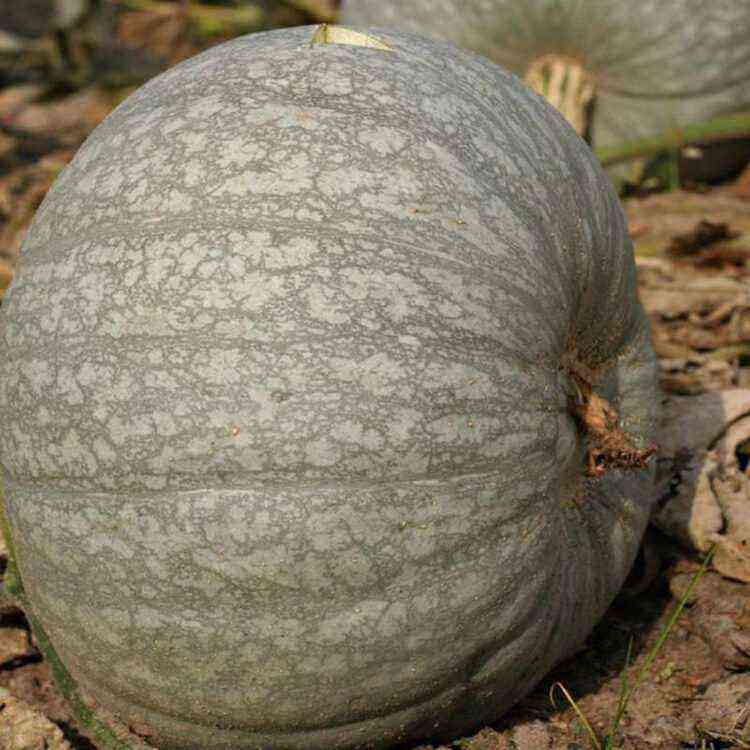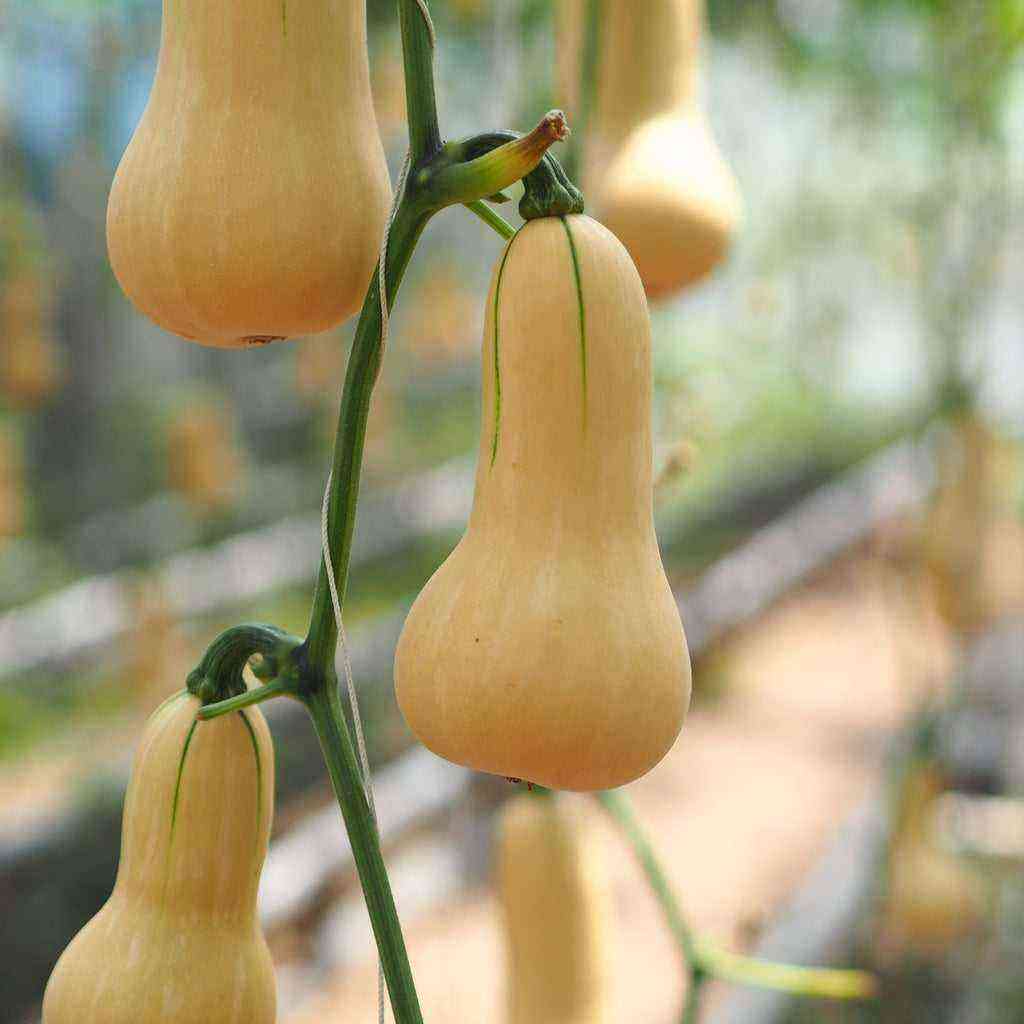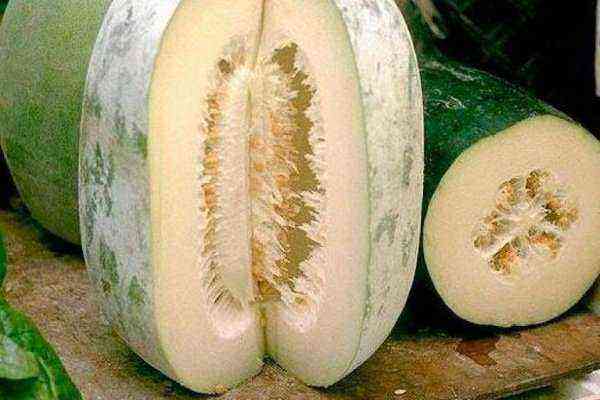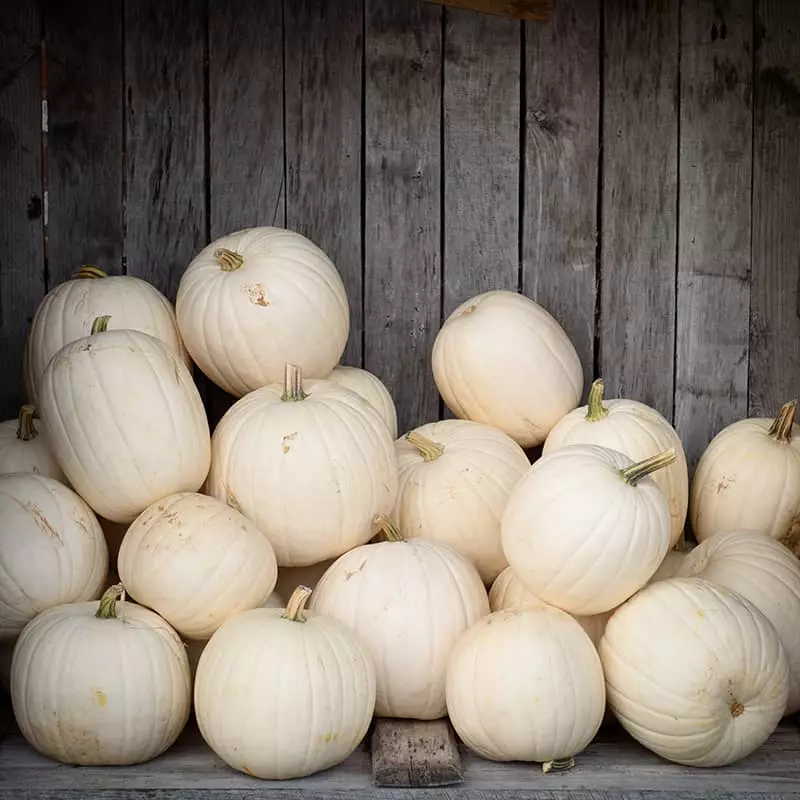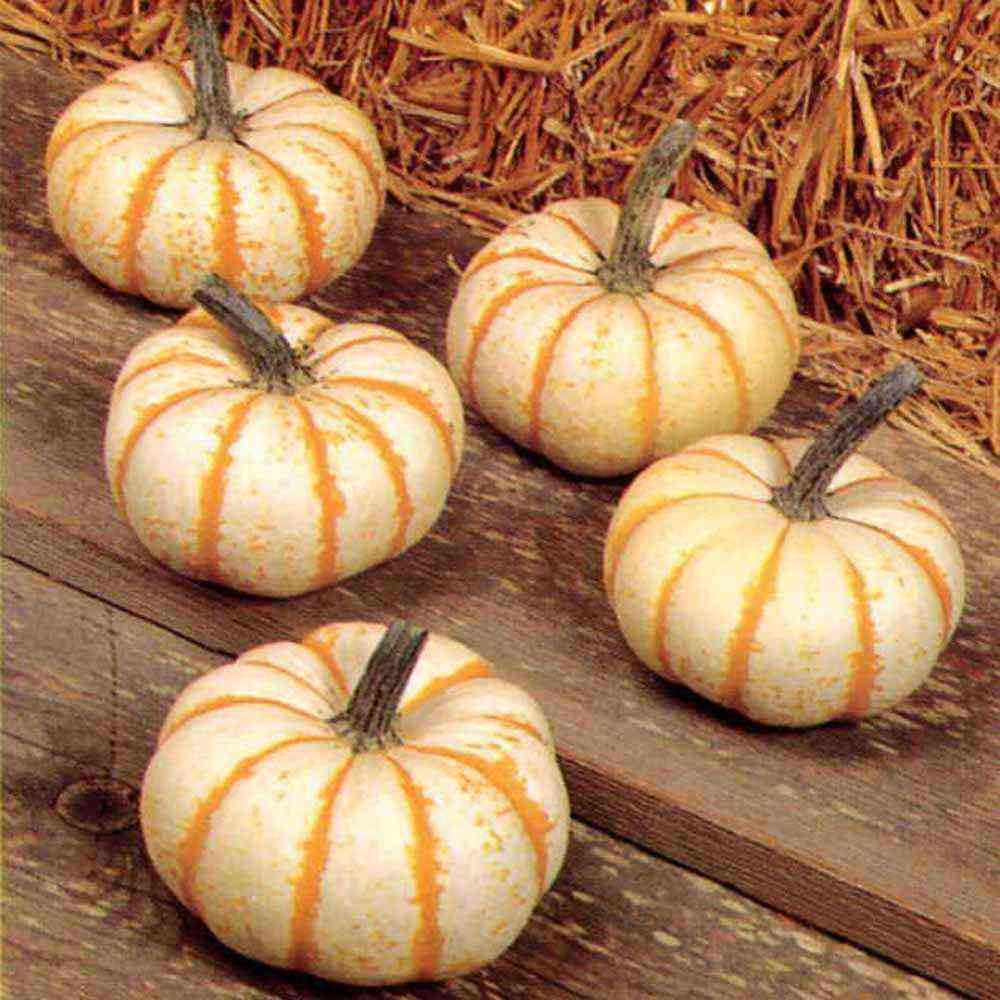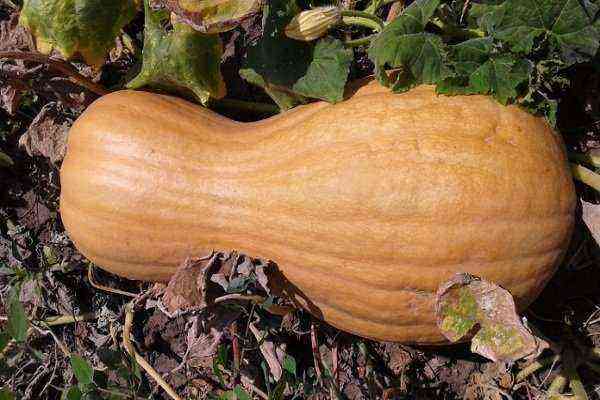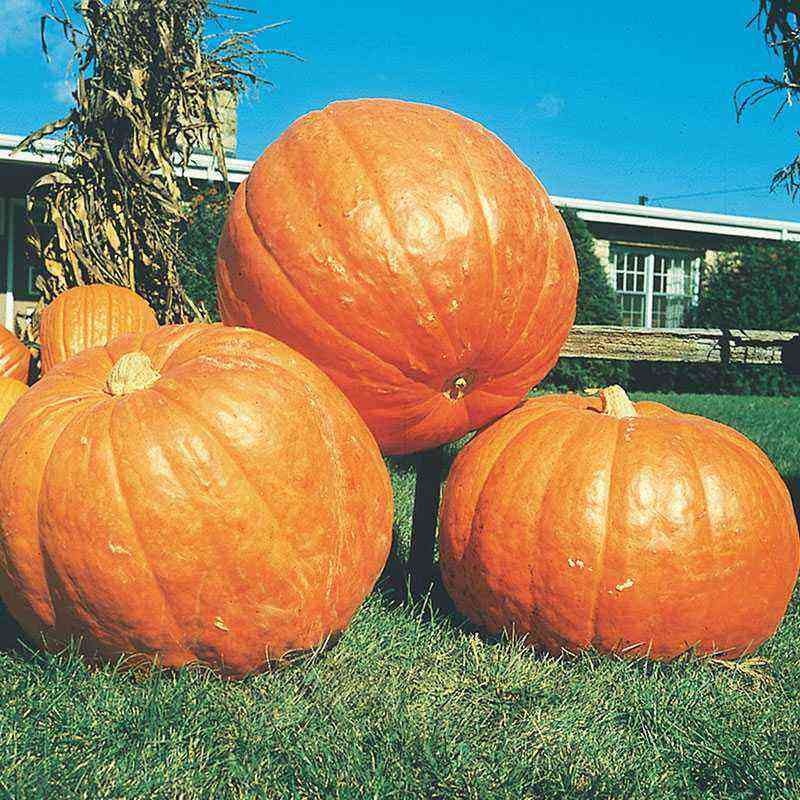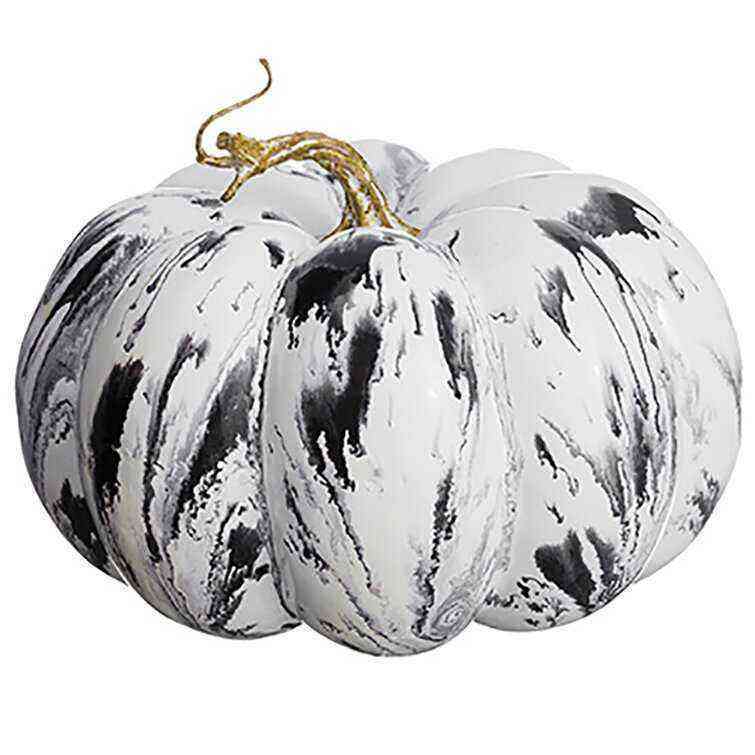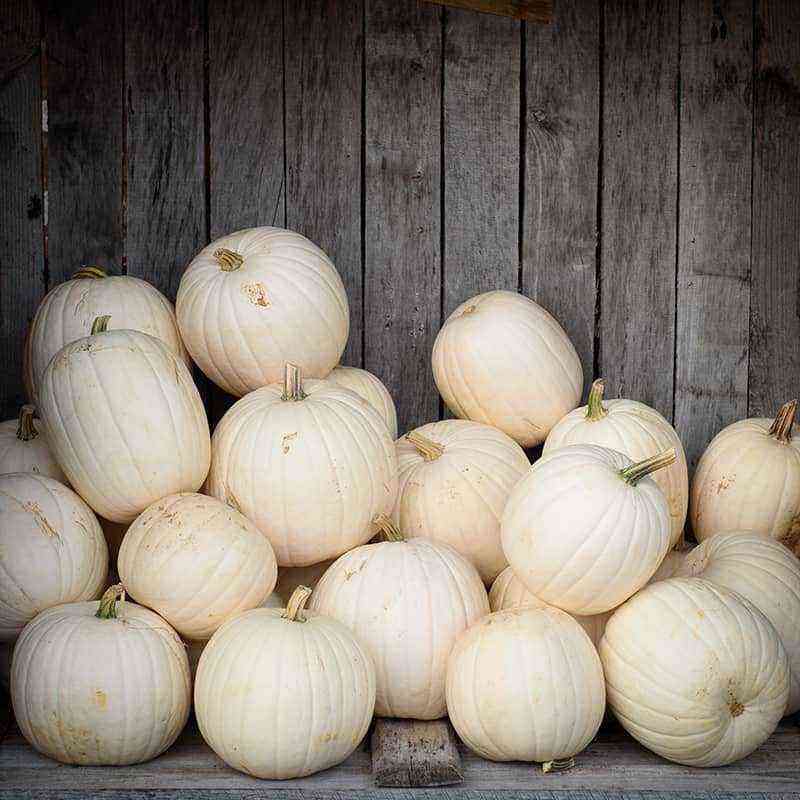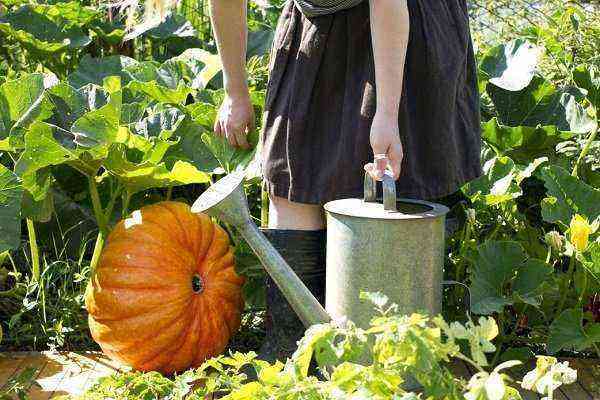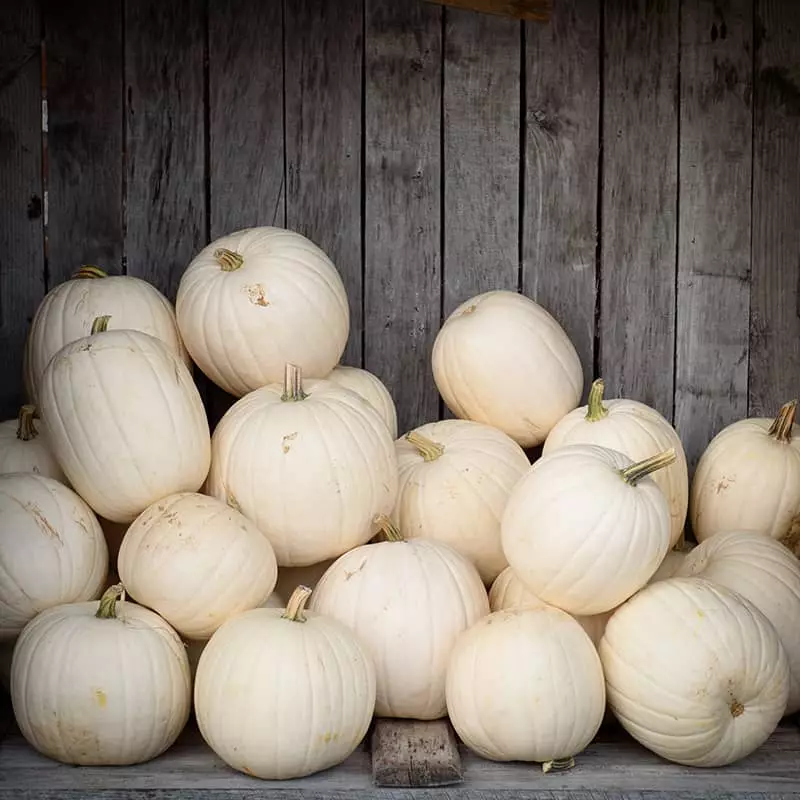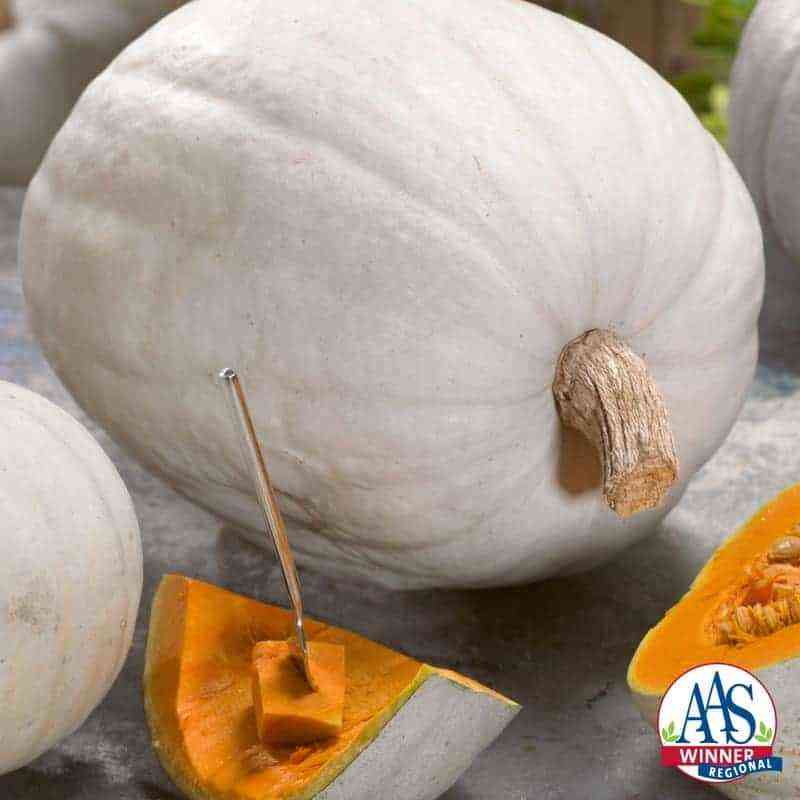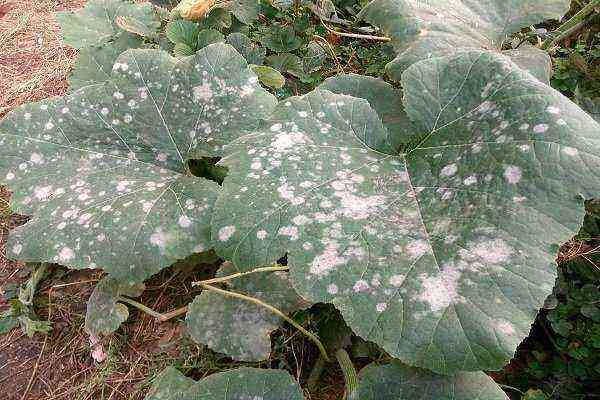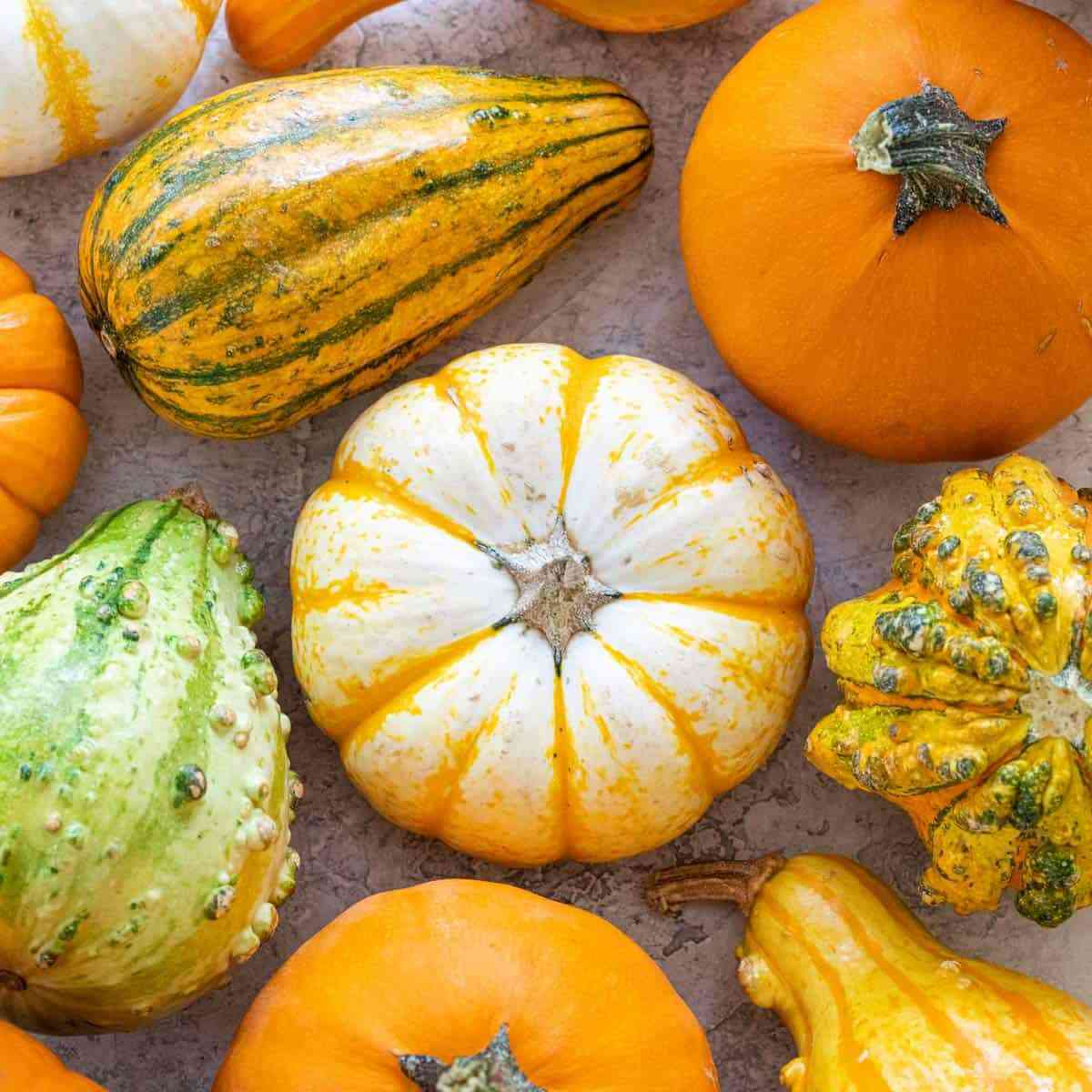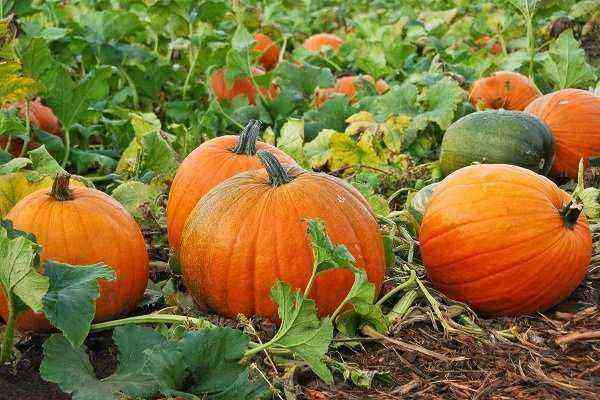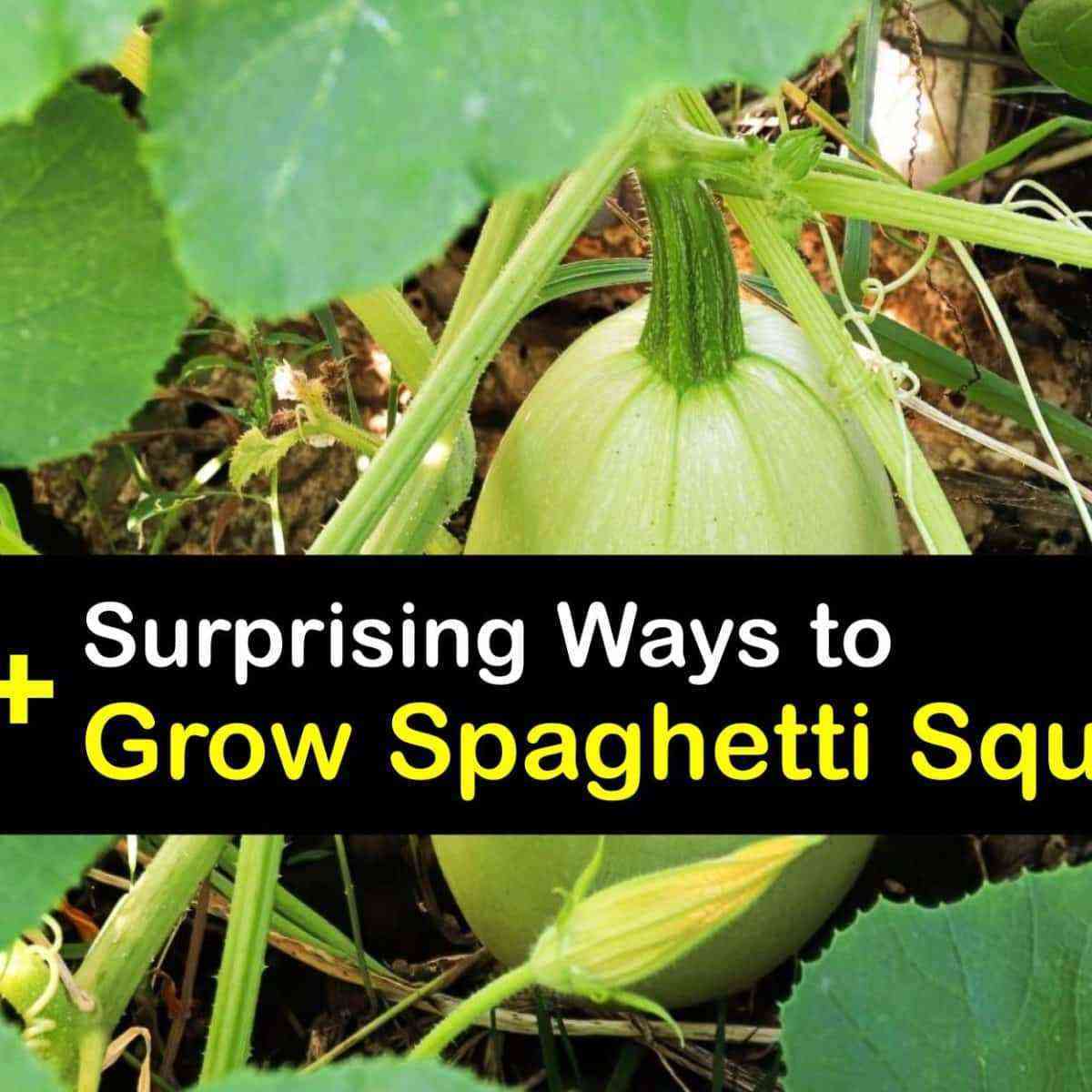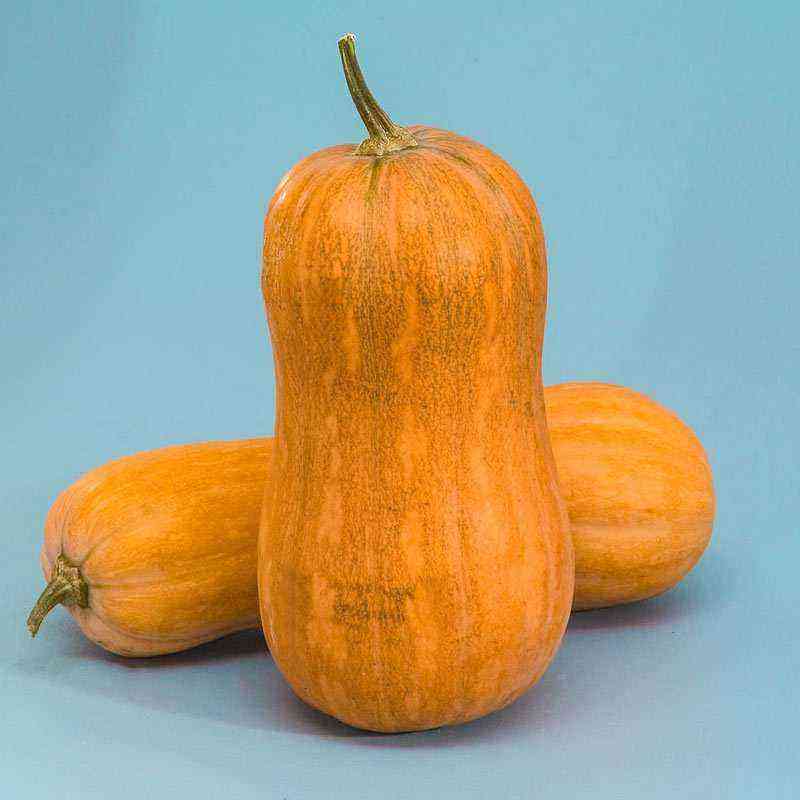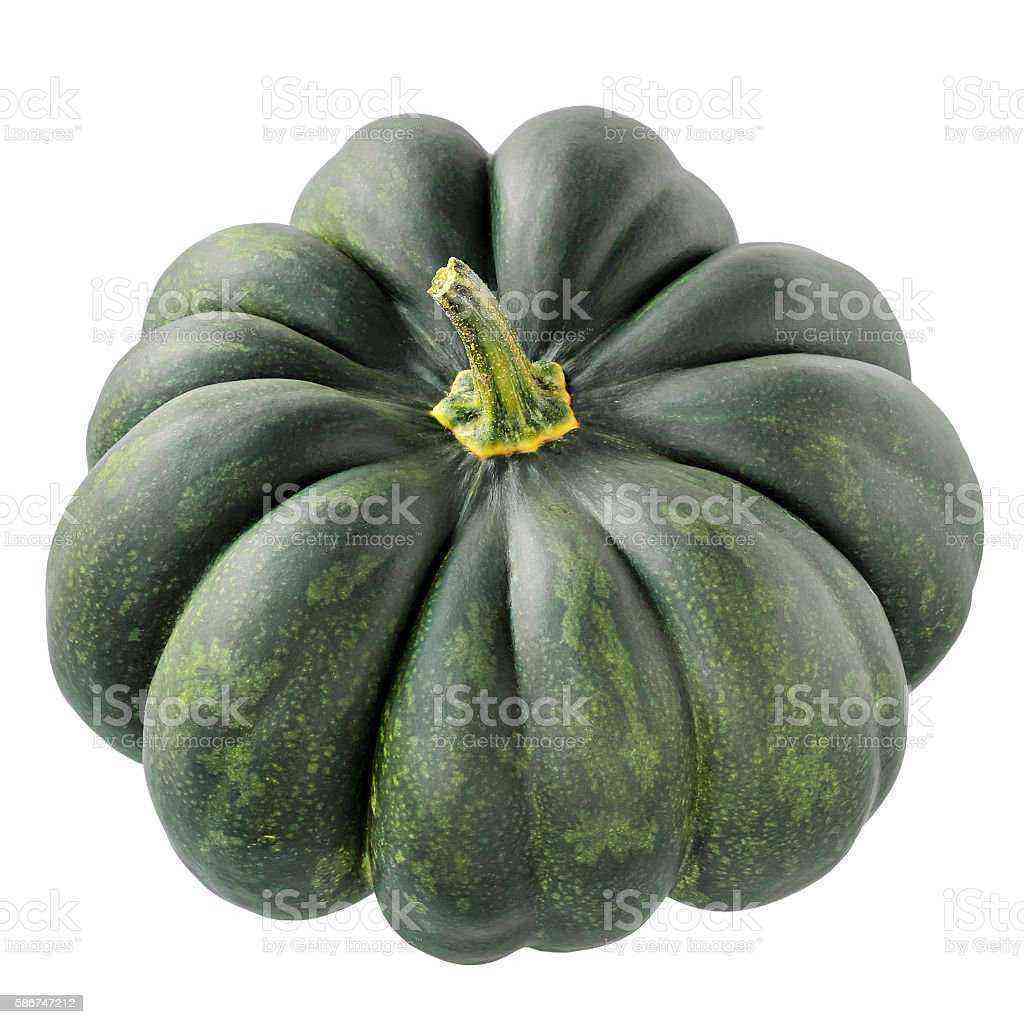Many summer residents grow pumpkins on their plots, and harvest them at the end of summer. One part of the fruit can be consumed immediately, and the other can be sent for storage. In order to be able to enjoy vitamin fruits even in the winter season, it is extremely important to observe the storage conditions, regardless of where the pumpkin lies – in the cellar or in the apartment. What are these conditions, we will understand further.
What varieties are suitable for storage?
Not all pumpkin varieties can be stored in the winter, so this factor must be taken into account when buying seeds. Mid-season and late-season varieties are best stored, especially if you plan to keep them in the cellar or basement. Varieties that are characterized by increased keeping quality are:
- Kherson. Mid-late, drought-resistant and heat-loving variety. This pumpkin has a dense gray skin and a slightly flattened shape. There are small spots and stripes on the skin. The flesh is orange, fleshy and sweet.
- Slavuta. It belongs to late varieties, so harvesting is carried out in the middle or end of September, depending on the weather. This variety of pumpkin has a greyish-green skin, sweet flesh, and strong immunity to disease.
- Yanina. A mid-season variety that has an oval shape, orange skin with small green spots and a pleasant sweet taste. Does not suffer from powdery mildew.
- Guillaume. Mid-season nutmeg variety, which has a thin skin, yellowish-orange flesh with a pleasant taste.
- Polyanin. Mid-season table variety. The fruits ripen in a cylindrical shape, have a brown peel and sweet pulp, which is used in baby food.
- Vitamin. This is a late-ripening variety of nutmeg pumpkin with a ripening period of 130 days, which is recommended to be planted in warm summer conditions. The fruits have an oval shape, yellow rind with green stripes and sweet orange flesh. They can weigh from 4 to 7 kg.
- Winter sweet. This is a mid-season variety with a gray rind covered with specks. The shape of the fruit is round and slightly flattened. The flesh is orange, sweet in taste and smells good. Has immunity against various fungal diseases. Well kept. Fruit weight – from 6 to 12 kg.
- Pearl. Mid-late variety of nutmeg pumpkin. The shape resembles a pear, the pulp is used even fresh. Fruits grow weighing up to 5 kg.
- Interception. A late-ripening variety that produces small fruits weighing up to 3 kg. Their shape is elongated or shortened. Great for baking and juice.
- Waiting. The variety is considered mid-season. The fruit ripens to a large size, has bright orange flesh and a sweet taste. Fruits can reach a weight of up to 8 kg. It has a strong immunity to diseases and long-term keeping quality.
- Arabatskaya. Butternut squash with a growing season of 118-127 days. The fruits are cylindrical in shape and resemble zucchini in external characteristics. They weigh from 9 to 20 kg. The rind is bright yellow and the flesh is orange and sweet. The variety is well stored in the cellar.
- gymnosperms. Medium-early pumpkin variety that grows from 5 to 15 kg. It has a hard rind and yellow flesh. Well preserved under optimal conditions.
Experienced gardeners recommend choosing varieties of nutmeg pumpkin for storage for the winter, since under optimal conditions they have a high keeping quality – about 6 months. Popular varieties include varieties such as Vitaminnaya, Zhemchuzhina, Intercept, Vita and Butternat.
Optimal storage conditions
Regardless of the place of storage, experienced gardeners identify universal conditions that allow you to keep the pumpkin fresh for as long as possible. They look like this:
- lack of light (it is required to prevent direct sunlight on the fruits);
- constant access to fresh air (there must be good ventilation in the room);
- comfortable temperature – + 3 … 15 ° C (at low temperature conditions, the fruits will freeze, and their shelf life will be reduced by 3-4 months);
- moderate indicators of air humidity – no more than 75-80% (with higher humidity, cobwebs, mold, spots and other signs of damage will appear on the peel of the fruit, so they will have to be removed and the storage location changed).
The cellar is considered the best place for storage, but with the right approach, the fruits can also be kept in a pantry, refrigerator, insulated balcony or garage.
Preparing for storage
First of all, it lies in the correct harvesting. Pumpkin is recommended to be harvested in early September, until frost sets in. By this time, it should be firm and slightly dry. Collection should be carried out on a dry day, cutting the pumpkin along with the stalk.
It is recommended that the collected fruits be cleaned of dirt with a dry towel and kept in the sun for several days so that the stalk dries well. This is an important point, because in the event of a violation of the integrity of the stalk, the vegetable will quickly deteriorate.
The dried fruits then need to be sorted out in order to select the most successful specimens for storage. They must be with stalks, fully ripe, healthy and holistic. If the pumpkin has damage, dark spots or mold, then it is not suitable for storage, even if unsuitable parts are cut off, because in this case the risk of infection of the entire fruit is extremely high.
For storage, you need to send a pumpkin with a natural protective layer, as it repels pathogens. In this regard, the collected fruits should not be washed or wiped with a damp cloth.
Where and how to store pumpkin?
In the cellar
The most reliable way to preserve a pumpkin is to place it in a cellar, as this place usually maintains a constant air temperature of about 5 ° C and maintains a moderate air humidity of 75%. Of course, before laying the vegetable, the cellar will need to be prepared first:
- completely get rid of last year’s harvest (you can only leave closed jars with pickled cucumbers, tomatoes);
- well ventilate the room;
- wipe the shelves;
- dry the floor
- carry out disinfection from parasites and mold (for this, it is recommended to smear walls and racks with lime before laying vegetables).
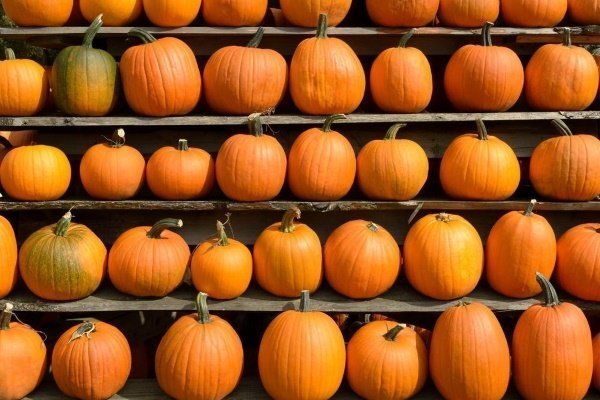
After preparing the premises, you can directly lay the pumpkin in compliance with the following rules:
- put the fruits on the racks, because the temperature on them is higher than on the floor;
- put dry paper or straw under the fruits;
- do not put fruits close to the walls;
- be sure to point up the stalks of the fruit;
- stand between the fruits about 10 cm, that is, do not lay them close to each other;
- put straw between pumpkins.
After laying, it is necessary to regularly review the condition of the fruits. If it is found that some fruit is spoiling, then it must be immediately removed from the cellar.
If condensation appears on the pumpkin, it should be thoroughly wiped with a dry cloth, and then ventilate the cellar and check how the ventilation system works. Condensation usually occurs at high humidity. If the water droplets are not dried, dark spots will form on the pumpkin, which will turn into rot. For preventive purposes, you can put quicklime in the cellar, as it perfectly absorbs excess moisture.
In the apartment
It is much more difficult to keep a pumpkin in an apartment in the winter, because for this you will need to find a lot of space, create temperature conditions and darkness. The task will be much easier if the apartment has a pantry. In this case, the pumpkin can be stored according to the following rules:
- For better preservation, put the fruits in containers, such as a cardboard box, wooden box, box or plastic container. For these purposes, plastic or plastic bags should not be used, since condensate will accumulate in them, which will lead to the formation of a favorable environment for the development of harmful fungi.
- Place parchment paper or a small layer of dry straw under the fruits, as well as between them. In the future, the litter should be changed if it becomes damp.
- Put containers with vegetables on the shelves of the pantry.
- Ventilate the room regularly and maintain the optimum temperature (up to 10-15°C).
- From time to time, inspect pumpkins in order to promptly remove fruits that begin to deteriorate.

Even if the pumpkin is stored in an apartment, it cannot be washed, since natural plaque should be preserved on the crust, which is a kind of protection against damage to the vegetable.
If the apartment does not have a pantry, then another space can be allocated for storing pumpkins:
- Cool place near the windowsill. Under the fruits and between them you need to put cardboard or a thick layer of paper, and they should be set with the stalks up. In the daytime, the sun’s rays will fall on the pumpkin, which will lead to its rapid deterioration. To prevent this, the vegetable should be covered with breathable material, such as a linen or cotton cloth.
- Glazed balcony or loggia. Cover the uninsulated floor with an old blanket, on which place the fruits with the stalks up and at a distance of 10 cm from each other. To protect from the sun, they need to be covered with a cloth. When the temperature drops, it is better to wrap the fruits using a cotton blanket. On the balcony, you can also make shelves or racks, which must be painted and whitewashed with lime to destroy fungi. After that, you can store a pumpkin on them.
- Under the bed in a cool room. In extreme cases, the pumpkin can be kept under the bed. It cannot be placed on linoleum or cement, so it is advisable to put plywood under it. The fruits still should not touch each other. As with other storage methods, they need to be stacked with the stalks up.
In a refrigerator
If the pumpkin has grown large, it will have to be divided into 2-3 parts, however, in this case, the shelf life at room temperature will be significantly reduced – up to 3-4 days. In addition, for this you will need to dry the cut with a napkin and wrap the fruit in linen to protect it from sunlight.
In the refrigerator, a cut pumpkin will keep for about 7 days if it is cut into pieces, which are carefully folded into clean plastic bags. To increase the storage time up to a month, you can wrap the pumpkin in foil, but in this case, the wrapper will have to be changed regularly, and the pumpkin pieces should be greased with vegetable oil so that they do not dry out.
The longest cut pumpkin can be stored in the freezer, but so that it does not deteriorate, it must first be frozen. Of course, in this case, much will depend on the quality of freezing. It is produced as follows:
- Rinse the fruits, remove the peel and seeds, and then cut into small pieces.
- Place the sliced pumpkin in the refrigerator for 8 hours or overnight.
- Hold the chilled pumpkin for about 1,5 hours at room temperature.
- Dry the pumpkin in the oven for about 2 hours at a heating temperature of 50-60 ° C, and then cool.
- Put the pieces in special containers or bags for freezing, removing excess air. So that in the future you do not have to defrost the entire pumpkin, it should be laid out in freezing containers in small portions – 300-500 g each.
- Place blanks in the freezer.
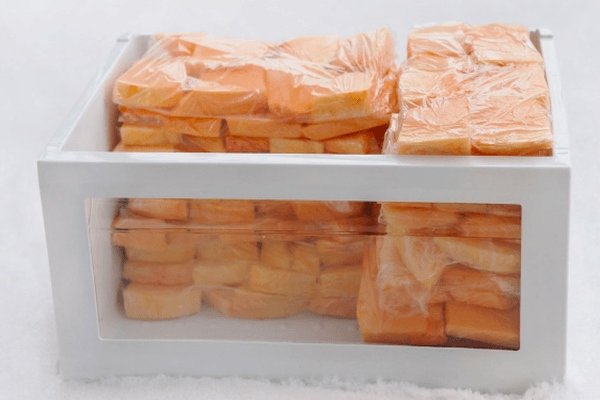
In this form, the pumpkin can be stored until the next season.
To enjoy the pleasant taste of a vitamin vegetable, it must be properly defrosted. So that the pumpkin loses less juice, it should be pulled out of the freezer and put on a shelf in the refrigerator. It will take about 10 hours to fully defrost. If you need to defrost the pumpkin faster, then you can simply put it in the sink and eat it after 5 hours, but in this case it will turn out to be drier.
For the fastest defrosting, the pumpkin can be sent to the microwave by turning on the “Defrost” mode. If there is no such device, you can simply throw a bag of pumpkin into a bowl of hot water. However, it should be noted that such methods adversely affect the structure of the pulp.
In what form to store?
Dried
In order to simplify the storage procedure of the pumpkin, it can be dried. In this case, it will take up less space, and also will not deteriorate. For drying, you can use a conventional oven or a special electric dryer. It is carried out in several stages:
- Wash the skin of the pumpkin, and then separate the pulp and remove the seeds.
- Cut the pumpkin into small pieces, about 1 cm thick.
- Line a baking sheet with parchment paper, on which spread the pumpkin slices in a thin layer.
- Preheat the oven to 60°C and dry the pumpkin for 5 hours. Switch off the oven periodically. The temperature should not rise to 80°C. Such manipulations will not be required when using an electric oven, which is able to maintain a constant temperature.
- Take out well-dried pieces and leave to cool.
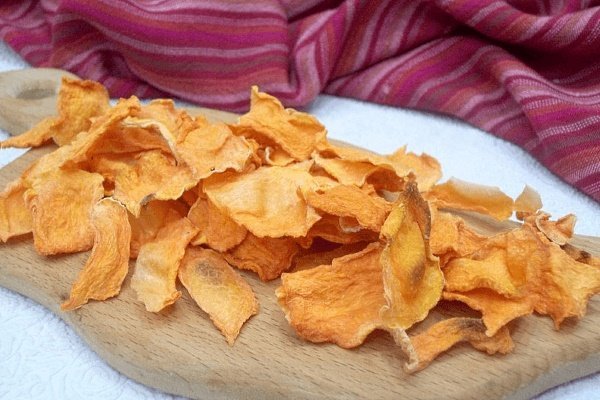
It is necessary to store dried pumpkin in containers without air access.
In brine
This method will allow you to save the pumpkin until the very spring, so you can enjoy your favorite vegetable all winter. Salted pumpkin is prepared as follows:
- Rinse the peel, and then cut the fruit into slices and remove the seeds.
- Throw the pieces into sterilized jars.
- Prepare a brine – in 1,5 liters of chilled boiled water, dissolve 3 tbsp. l. salt.
- Pour the brine into jars with pumpkin, and to the very edges of the container, and cover with a plastic lid.
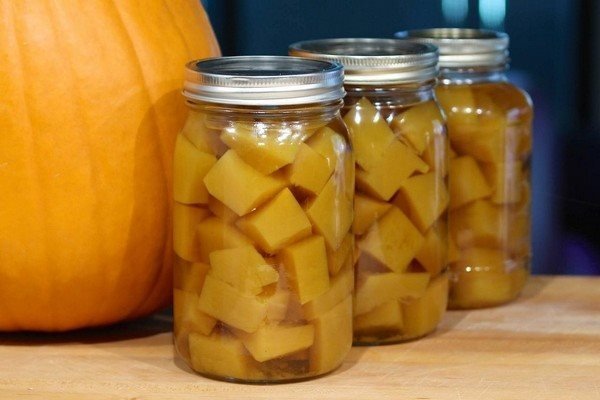
It is recommended to store cans of pumpkin in a cellar or refrigerator.
Pickled
Pickled pumpkin resembles canned pineapple. This method of harvesting will allow you to enjoy your favorite vegetable for a whole year and even more. It can be served as a side dish for meat or as an independent dish.
For pickling, you will need the following ingredients:
- pumpkin – 1 pc.;
- water – 1, 5 liters;
- citric acid – 1 tsp. with a slide;
- sugar – 150 g;
- salt – 1 Art. l .;
- lemongrass – 7 leaves;
- radiola pink – 7 g.

To prepare a pickled product, you will also need a pre-sterilized glass jar.
The pumpkin is marinated as follows:
- Wash a medium-sized pumpkin, separate the pulp and remove the seeds. Cut the pulp into small cubes.
- Boil the pumpkin for about 5 minutes, and then throw the boiled pieces into a sterilized jar.
- Prepare the filling by boiling water with the addition of sugar, salt, citric acid, lemongrass leaves and Rhodiola rosea powder.
- Pour the filling into a jar of pumpkin.
- Roll up the jar with a metal lid and turn over for a while.
Store pickled pumpkin in a cool place, preferably in the cellar.
How long can pumpkin be stored?
You can store a pumpkin for different times, since it all depends on the conditions created and how it is processed:
- fresh pumpkin, cut into pieces, stored in the refrigerator from 7 to 30 days;
- in the conditions of an apartment, the shelf life is about 4-6 months, but there are pumpkin varieties and individual specimens that are stored for up to 12 months;
- if the vegetable is laid out on the shelves in the cellar, then it can be kept in this form until spring;
- frozen and canned pumpkin can be stored for 1 year;
- dried pumpkin in a well-sealed container can be stored for 1,5 to 2 years.
Storage errors
Many summer residents who grow pumpkins on their own make a number of mistakes that reduce the shelf life. These include:
- picking an unripe vegetable, which quickly becomes moldy and begins to rot;
- watering pumpkins a week before harvesting (being in dampness, the fruit begins to deteriorate quickly);
- sending fruits for storage in the cellar without prior drying in the sun and in a dry place;
- storage of pumpkins in the cellar on shelves with raw wood or on a cement floor;
- laying pumpkins for storage in the same cellar as apples that emit ethylene.
Video: how to store a pumpkin?
Under what conditions to store a pumpkin so that it does not become covered with mold and rot, is described in the following video:
How to save a pumpkin so that it lies almost until the next harvest? The answer can be found in the video below:
Pumpkin is a healthy dietary product that can be stored for the winter both fresh and processed. To preserve all the useful properties of the product fresh, it is better not to store it for more than 6 months. It should be noted that the optimal period for storing pumpkins is 2-3 months.
